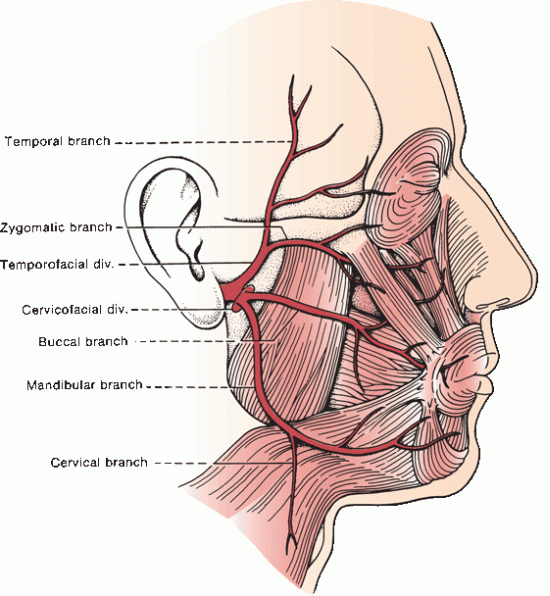FACIAL NERVE
Facial nerve
It originates from the 2nd brachial arch of the embryo

NUCLEI
facial nerve has 4 nuclei
1. motor nucleus (brachiomotor)
- lies deep in the reticular formation of lower pons
2. superior salivatory nucleus
- it is located in the pontine tegmentum
- pontine tegmentum is the basilar part of pons
- it is parasympathetic
3. lacrimatory nucleus (parasympathetic)
4. nucleus of tractus solitarius
- receives afferent fibers form glands

FUNCTIONAL COMPONENTS
1. Special visceral efferent (brachial efferent)
- facial expression
- helps in elevating hyoid bone
2. General visceral efferent
- parasympathetic
- secreatomotor pathway to the following
- submandibular gland
- sublingual gland
- lacrimal gland
- glands of nose
- palate
- pharynx
3. General visceral afferent
- carries afferent impulses from the above gland
4. Special visceral afferent
- carries taste sensation from anterior 2/3rd of the tongue
5. Gendral somatic afferent
- innervates a part of skin above the ear
COURSE
1. attached to brainstem through two roots - sensory and motor (sensory root is called nervus intermedius)
2. runs lateral and forward to reach internal acoustic meatus
3. at the bottom of the meatus both sensory and motor nerve fuses to form a single trunk
4. the singe trunk continues to the facial canal of petrous temporal bone
5. within the canal the single trunk branches into 3 parts
- first part lies above vestibule
- second part runs backwards to the medial wall of middle ear
- third part runs vertically downwards
6. the 3 parts of facial nerve are separated by 2 bends
the First bend
- is sharp and called genu
- lies anterosuperior to the promontory
- geniculate ganglion gets its name from genu since it lies in this region
the Second bend
- is called gradual
- lies between the promontory and mastoid antrum
7. leaves the skull by passing through the stylomastoid foramen
8. enters the posteromedial surface of the parotid gland and runs across retromandibular vein and gives to terminal branches

BRANCHES OF FACIAL NERVE
1. within the facial canal
- great petrosal nerve
- nerve to satpedius
- chorda tymapni
2. at stylomastoid foramen exit
- posterior auricular
- digastric
- stylohyoid
3. terminal branches within parotid
- temporal
- zygomatic
- buccal
- marginal mandibular
- cervical
4. communication branches
- greater petrosal nerve
- nerve to stapedius

NERVE SUPPLY OF TERMINAL BRANCHES
Chorda tympani
- carries preganglionc secreatomotor fibers to submandibular gangion to supply submandibular gland
- taste from the anterior 2/3rd of the toungue
posterior auricular nerve
- supplies the following
- auricularis posterior
- occipitalis
- the intrinsic muscle behind the auricle
digastric branch
- supplies posterior belly of digastric
Stylohyoid branch
- supplies the stylohyoid muscle
Temporal branches
- temporal branch supplies the following
- auricularis anterior
- auricularis superior
- an intrinsic muscle in the lateral side of ear
- frontalis
- orbicularis oculi
- corrugator supercilli
Zygomatic branch
- supplies orbicularis oculi
Buccal branch
- supplies muscles in the buccal region
- especially buccinator
Marginal mandibular branch
- supplies lower and upper chin
Cervical branch
- supplies platysma

GANGLIA
there are 3 ganglias associated with facial nerve
1. geniculate ganglion
- present in the first bend
- sensory ganglion
- taste fibres present in the facial nerve are psudounipolar neurons present in the geniculate ganglion
2. submandibular ganglion
- parasympathetic
- relays secretomotor fibers to submandibular and sublingual gands
- preganglionic fibres from Corda tympani
3. pterygopalatine ganglion
- parasympathetic
- supplies secretomotor fibers to the lacrimal gland
Comments
Post a Comment